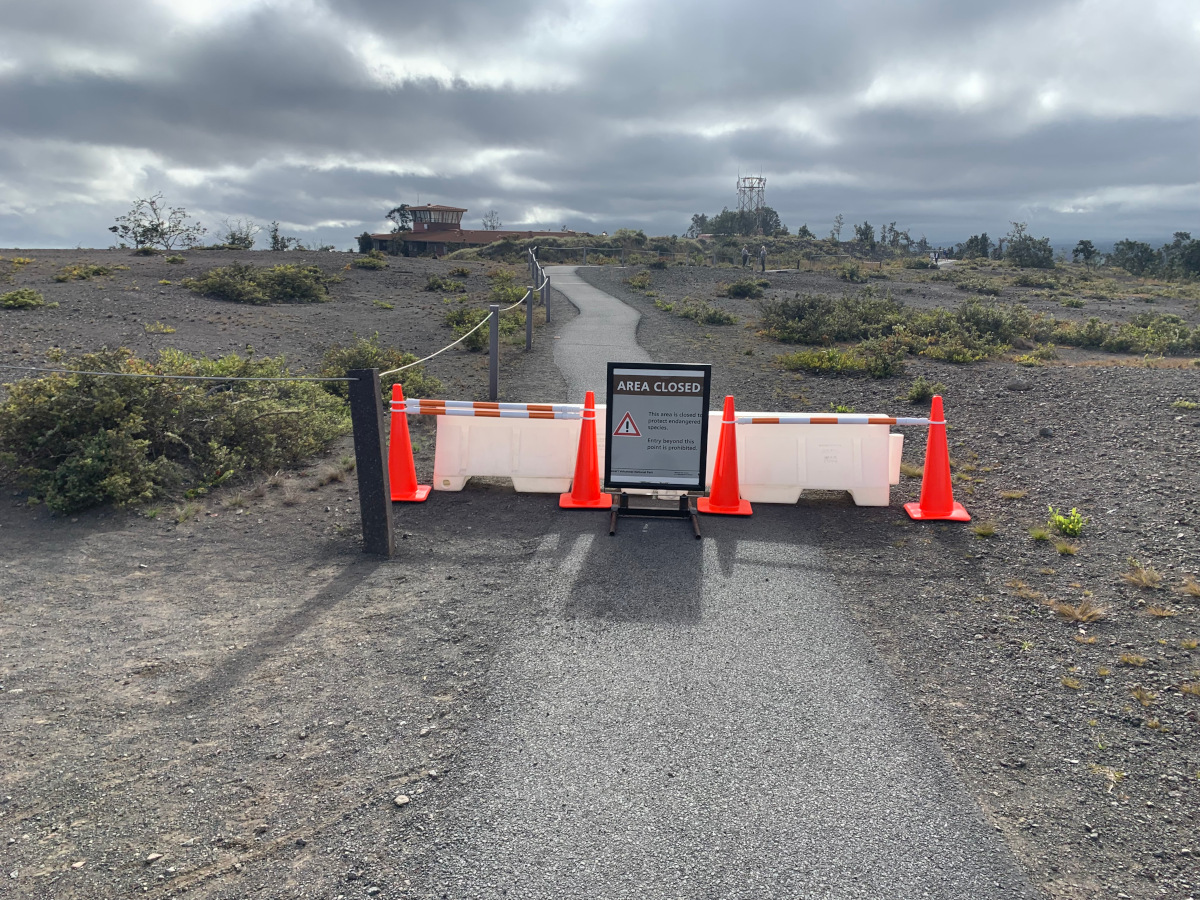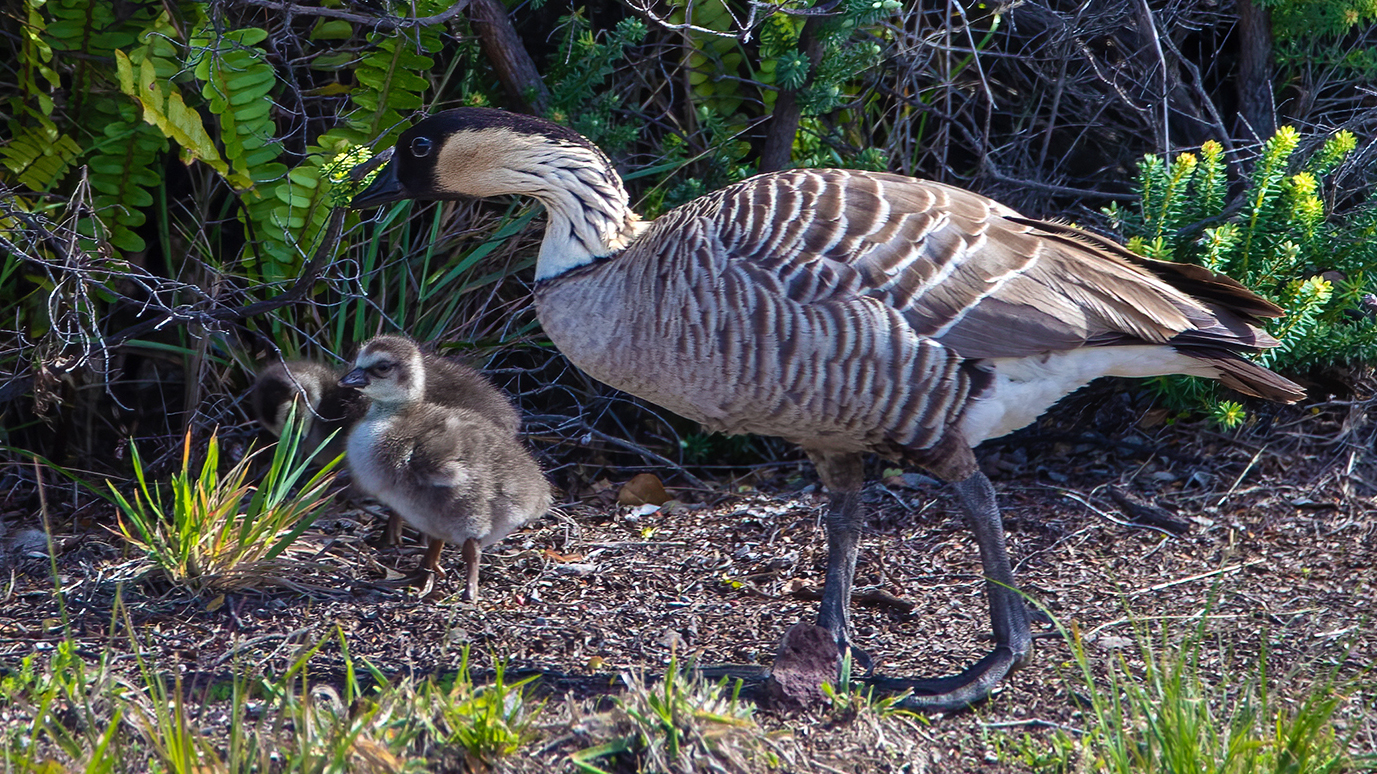
NPS: “A portion of Crater Rim Trail between the USGS Triangulation station and the parking lot at Uekahuna is closed to protect nene nesting in the area.” (NPS Photo)
(BIVN) – Some areas in Hawaiʻi Volcanoes National Park have been closed to protect a pair of breeding nēnē, the rare and endemic Hawaiian goose.
The National Park Service says part of the parking lot at Uēkahuna and a short stretch of Crater Rim Trail east are now temporarily off-limits to the public. Park officials say the western overlook and restrooms at Uēkahuna remain open, as do dozens of parking spots and the large bus stalls. Additional areas could close with little notice, if biologists determine the nēnē pair requires more protection.
“The temporary closure prevents human activity from disrupting the nēnē family and is an important action we take to help them survive and raise their young,” said Hawaiʻi Volcanoes National Park Wildlife Biologist, Dr. Kristina Paxton in a news release. “Nēnē face many challenges, including predation by feral cats and mongoose and deadly contact with vehicles.”
From the National Park Service:
Nēnē typically mate for life. Female nēnē lay between two and five eggs and will incubate them while the male guards the family. Incubation takes about 30 days, but re-nesting could occur if eggs are destroyed or abandoned.
Nēnē nesting season is October through May, and many geese are seen on or near roadways throughout the park, making them especially vulnerable to deadly vehicle strikes this time of year. Visitors can help protect nēnē by slowing down, watching for nēnē near roads, and never, ever feeding nēnē. Keep wildlife wild and give nēnē space by staying at least 60 feet from them.
Last year, a different nēnē pair nested near the western end of Uēkahuna which prompted a five-week closure of the entire parking lot, restrooms and overlook to protect the family.
The HVNP website has more information on nēnē.


by Big Island Video News2:16 pm
on at
STORY SUMMARY
HAWAIʻI VOLCANOES NATIONAL PARK - The parking lot at Uēkahuna and a short stretch of Crater Rim Trail east have been temporarily closed to protect the breeding pair of geese.